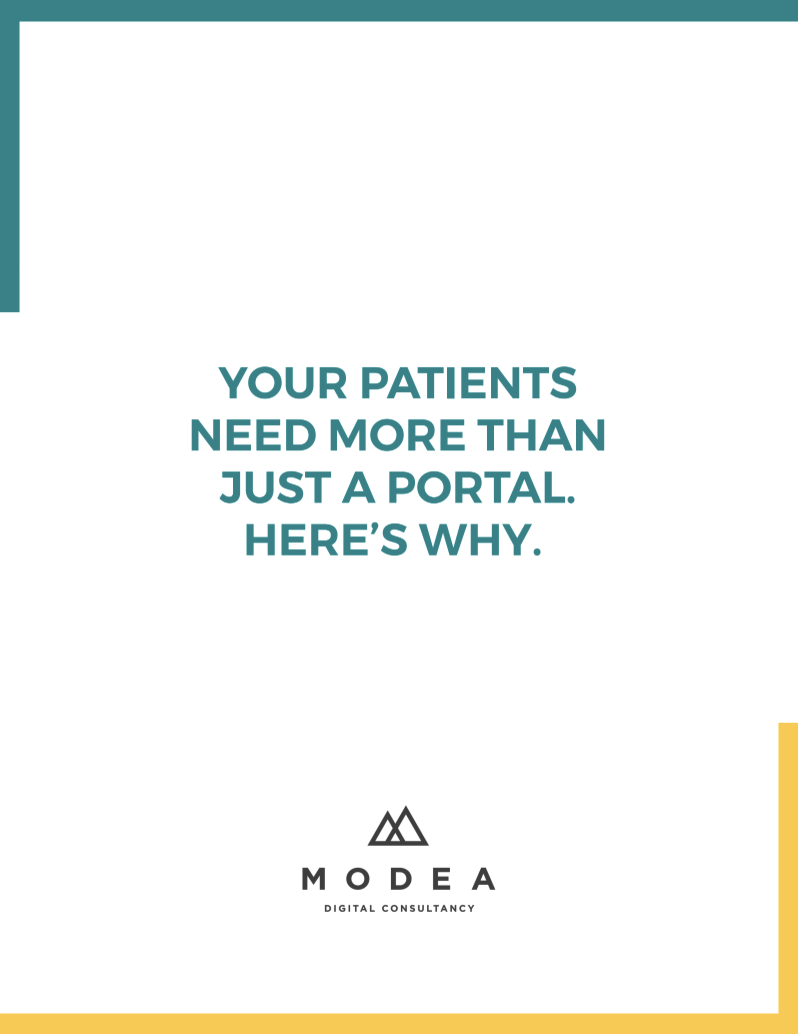
Today, the patient journey often begins in a search bar. Search engines and digital platforms are now the primary entry point for people seeking health information, symptom explanations, and provider comparisons. This shift allows patients to arrive at appointments better prepared, adjust or delay care plans, and even change how they perceive their providers.
The Rise of the Healthcare Consumer
Many patients now approach care the way they shop for retail products. They research, compare, and expect straightforward digital experiences. Convenience and speed are non-negotiable, and technology is central to meeting those expectations. Online scheduling, patient portals, and mobile apps that deliver quick access and personalized support are no longer nice-to-haves; they are essential.
At the same time, cost and trust remain major barriers. Deloitte’s 2024 Health Care Consumer Survey found that affordability is the top reason people skip care, followed by access challenges such as long wait times and limited office hours. Trust is equally important, particularly with emerging technologies like AI. Patients want transparency and control over how their data is used and how decisions are made.
Recognizing this, healthcare leaders are taking note. Many have prioritized strategic technology investments in 2025 to reduce friction, improve affordability, and strengthen trust. Providers that align digital transformation efforts with consumer expectations will be positioned to deliver care that is more accessible, efficient, and patient-centered, delivering health system ROI in the process. These efforts closely mirror how patients engage with the system: through search.
Trends Shaping Search Behaviors
Nearly 80% of people use search engines to begin their healthcare journey, making online visibility a critical factor in acquisition and trust. Health-related queries account for about 5% of Google’s total search volume.
This research phase represents the “zero moment of truth” in healthcare. Patients gather information and weigh options long before they set foot in a clinic. Healthcare organizations that do not engage in digital patient access risk being invisible to a large portion of prospective patients.
What Consumers Search For
Patient searches reveal intent and provide insight into how people choose and evaluate care. Healthcare search behavior typically falls into three categories:
- Information seeking. Patients want to understand symptoms, conditions, and treatments.
- Access focused. They look for immediate solutions: “urgent care near me,” “book appointment online,” “telehealth now.”
- Trust signals. Reviews, ratings, and words like “best” and “affordable” influence decision-making.
Economic pressures also shape behavior. Many patients compare prices, weigh insurance coverage, and look for clear cost information before committing to care. These categories capture current behaviors, but new trends are already reshaping how patients search for and evaluate care.
Emerging Trends in Search
Several major trends are reshaping healthcare search.
Generative AI search engine results. With consumers increasingly relying on genAI search results (with Google’s AI Overviews as the most prominent example), there is higher focus on ensuring websites are optimized for this new paradigm. This includes favoring authoritative, structured content, performing regular quality checks of your website, and building brand authority.
Mobile-first behavior. Smartphones dominate, and “near me” searches for doctors, pharmacies, and urgent care are the norm. Local optimization is no longer optional; it is essential for visibility.
Voice search and AI assistants. Patients increasingly use conversational queries. A Pew Research Center study found that 23% of respondents would trust AI medical advice over a doctor’s. Content that answers natural language queries clearly will be most effective.
Preventive and holistic care. Searches extend beyond treatments to include wellness, nutrition, and mental health, reflecting interest in proactive health management.
Generational differences. Gen Z and Millennials lean heavily on the internet for healthcare information, including reviews, social media, and digital comparisons, while Gen X and Boomers increasingly adopt digital tools but still weigh the traditional reputation of word of word of mouth. Across all age groups, consumer expectations shaped by retail experiences, such as personalization and ease, are influencing healthcare choices.
Beyond SEO: Smarter Site Search
Attracting patients to your website is only half the challenge. Once they arrive, poor navigation or clunky site search can quickly drive them away. AI-powered site search addresses this gap by using natural language processing to understand intent.
For example, a search for ‘heart doctor’ should reliably return cardiology content. Intelligent search can also personalize results based on location, services, or insurance, reducing friction and improving engagement. With AI generated summaries now common, users increasingly prefer quick, conversational answers – and this extends from search engines to websites.
As Modea discussed in our recent webinar Booking Made Easy: A Digital First Approach to Patient Scheduling, healthcare organizations can meet this demand by integrating conversational chatbots directly into their websites. Those that deliver this type of intuitive search experience are more likely to keep visitors engaged and convert them into patients.
What This Means for Healthcare Organizations
The modern digital patient journey is shaped by two forces: 1) external search engines and 2) intelligent on-site navigation tools that help visitors quickly find the information they need once they arrive. To compete, healthcare organizations need more than visibility. They need a holistic digital and content strategy.
Websites must deliver clarity, speed, and patient-centered design. AI-powered features such as intelligent search, personalization, and conversational tools should be built in to create frictionless digital experiences.
Organizations must showcase trust through reviews, ratings, and clear service line pages. A Gallup poll found that credibility and reliability are top reasons patients choose a hospital, making social proof essential.
Local SEO and paid visibility are critical for reaching patients at the moment of need. Being discoverable at the moment of search directly impacts patient acquisition.
Search insights should guide broader strategy. External search data reveals what patients want, while internal site search data shows what they struggle to find. Together, these insights can inform service line growth, content creation, and marketing priorities. Equally important is a continued understanding of how AI and NLP algorithms surface information from websites, since this influences both visibility and the patient experience. If you are interested in exploring how these features could strengthen your website, contact Modea.
Conclusion
Search has become the starting point of the healthcare journey. Patients rely on it to find information, evaluate providers, and book care. Organizations that combine strong SEO with intelligent, AI-driven site search can meet patients where they are and guide them smoothly to the right services.The future of healthcare marketing will be shaped by rising consumer expectations, personalization, and data-driven insights. Now is the time to evaluate your website. Can patients find what they need quickly? Is your search powered by AI? Are you delivering a frictionless, patient-centered digital experience that builds trust? The organizations that take these steps will be the ones that attract and retain patients.
Contact us to start the transformation.

